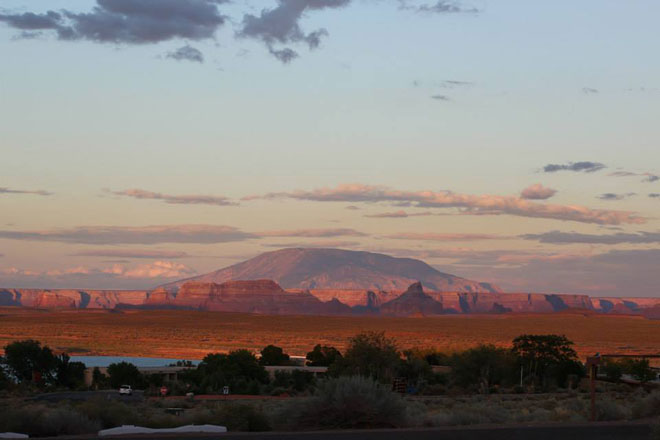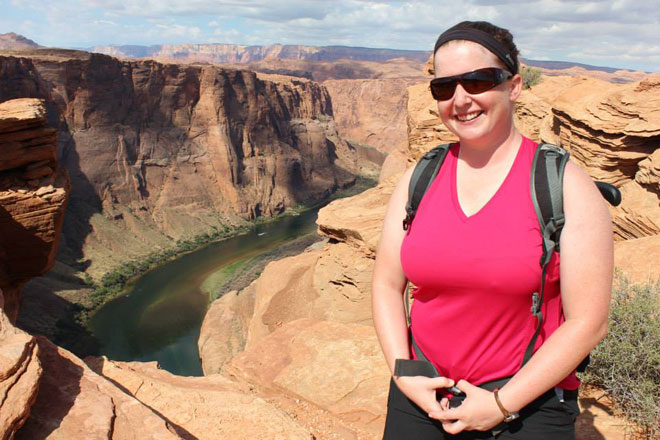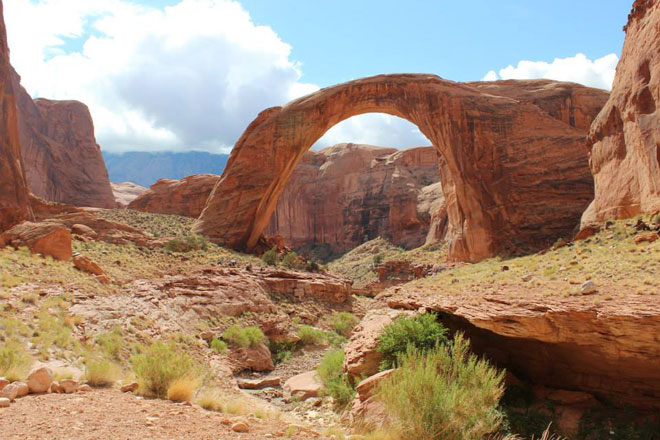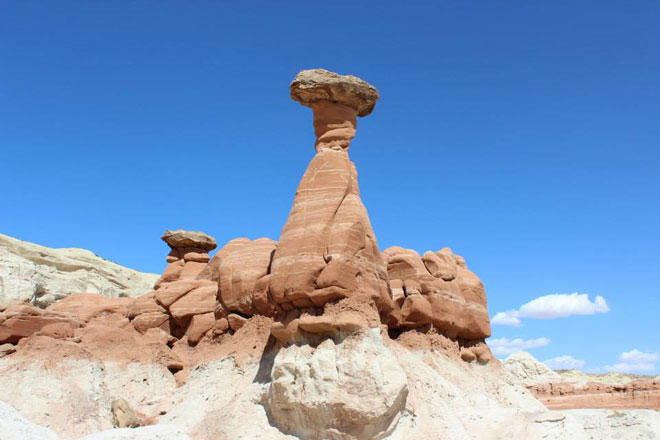Water may be rare in the desert, but it is also one of the most powerful forces affecting the landscape—sculpting natural bridges, shaping arches, and carving canyons. Glen Canyon National Recreation Area offers some of the most dynamic and unique demonstrations of the power of water, with its 156,000-acre lake, the world’s largest natural bridge, and some of the most beautiful slot canyons in the Southwest.
Lake Powell is a reservoir created by Glen Canyon Dam. The dam was completed in 1963, changing the surrounding environment dramatically. Nestled among buttes, cliffs, canyons, and mesas, Lake Powell makes up 13% of the 1.2 million-acre park and spans 186 miles from bottom of Canyonlands National Park at its northern boundary to the tip of Grand Canyon National Park at its southern boundary.
There are many things to do within this recreation area, whether it is a stop along a larger trip or your final destination. This park is divided into three areas: Lees Ferry, Wahweap, and Bullfrog and Halls Crossing.
Before you start exploring
- Check out a visitor center to speak with rangers about interesting events happening in the area during your visit. The two visitor centers are located near Wahweap and Bullfrog.
- Be sure to pick up a copy of the park newspaper, Discover Glen Canyon, for a great list of hikes and events.
- Know that this 1.2 million-acre park only has 13 miles of designated “trail.” All other “trails” are unmaintained routes through washouts, drainage areas, and old river beds. These routes are marked by cairns, stacked rocks, to help guide hikers in the right direction, but be aware before you head out that you will have to be alert to stay on the path.
Things to do
Lees Ferry
- Check out the Navajo Bridge that crosses the Colorado River. This is a neat spot to get out, stretch your legs, and take some great photos of a deep canyon.
- Visit Lees Fort. One of the few historic buildings in the area, Mormon colonists created this fort to defend a ferry crossing used by religious settlers crossing into Arizona in the 1800s.
- If you enjoy rock scrambling, hike Cathedral Wash where you can see interesting rock formations and fossils.
Wahweap
- Camp at Wahweap for great views of Lake Powell, including gorgeous sunsets and stargazing.
- Horseshoe Bend is a must! The color contrast of the blue-green water and red sandstone is just stunning. If you can, hike past the overlook and spend some time walking around the canyon edge.
- See the Hanging Garden, a natural spring along a canyon wall in the desert. This area also provides a great view of Lake Powell. You can even drive to the end of the gravel road and hike down to the water’s edge to enjoy a more secluded slick rock beach.
- Want to escape the crowds? Try hiking Wiregrass Canyon, where you can see two natural bridges. Be careful, as this route is very secluded and is in a sandy wash. Do not hike if there is a threat of rain or thunderstorms. Follow the cairns and make the hike as long or as short as you want.
- Take a 45-minute tour of the dam at the Carl Hayden Visitor Center.
Bullfrog and Halls Crossing
- Be sure to visit Defiance House, which is part of an Ancestral Puebloan settlement. It is one of the best-preserved dwellings in the park.
Side trips
Grande Staircase-Escalante National Monument
- Grande Staircase-Escalante is a stone’s throw from Glen Canyon. Managed by the Bureau of Land Management, this park has unique rock formations and plenty of hiking trails to keep you busy. If you are near Wahweap, try hiking the Toadstools, roughly 20 miles west of Glen Canyon. This hike leads you to unique hoodoo formations and balanced rocks.
Rainbow Bridge National Monument
- Rainbow Bridge is the world’s largest natural bridge. You can only get here by boat or Jet Ski via Lake Powell or a three-day backpacking trip through Navajo Nation, for which permits are required. (Boat tours are also available.)
- Fun fact: Standing at 290 feet tall, you can almost fit the Statue of Liberty underneath the bridge.
- Rainbow Bridge is sacred to Native American nations. Out of respect for long-standing beliefs, the Park Service requests that visitors not approach or walk under the bridge.
This story is part of NPCA’s biweekly Desert Getaway series. Read more stories in the series for tips on visiting other desert parks.
About the author
-
 Megan Cantrell Former Social Media Manager
Megan Cantrell Former Social Media ManagerMegan Cantrell worked at National Parks Conservation Association for 10 years, much of that time shepherding NPCA’s social media program.



